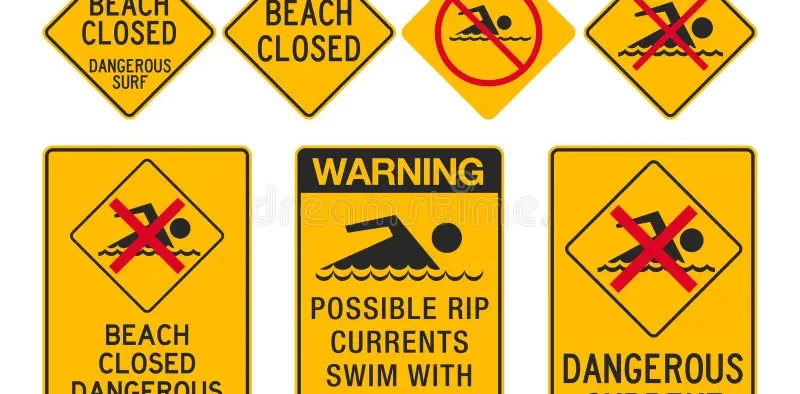Drownings at Conspicuous Cliffs beach prompt calls for more signage, education

In short:
Colleagues say a Bangladeshi-Australian mother and father who drowned at Conspicuous Cliff will be missed by those who knew them.
An advocate for migrant communities is calling for more water safety education suited to Australia’s diverse population.
What’s next?
The local shire president says safety precautions at the beach will be reassessed following Saturday’s deaths.
The deaths of a father and mother on WA’s south coast — two of four drownings across the country over the weekend — has prompted calls for action on a national and local level.
Associate Professor Mohammad Shahidul Husan Swapan and Dr Sabrina Ahmed died on December 28 at Conspicuous Cliff beach, 340 kilometres south of Perth, while another 42-year old man remains in a stable condition in hospital.
In a statement from colleagues of Associate Professor Swapan at Curtin University, the two Bangladeshi-Australians were remembered as important contributors to their fields and communities.
“They offered help to community members in need, providing assistance in times of difficulty,” the statement read.
“Both Swapan and Sabrina will be missed by their colleagues, friends and community members in Australia, Bangladesh and beyond.”
WA’s Department of Planning, Lands and Heritage, where Dr Ahmed worked, expressed shock at the deaths.
“The [department] is deeply saddened and shocked by the recent passing of our colleague Sabrina Ahmed and her husband in tragic circumstances,” it said.
“We extend our sympathies and condolences to Sabrina’s family, loved ones and colleagues.
“We will continue to provide support to our staff, and to her family, during this very difficult time.”
Conspicuous Cliff beach is notorious among locals for its dangerous currents. (Supplied)
The deaths have lead one advocate to call for more water safety education for migrants, while locals to the area say more warnings are needed for visitors.
Advocate calls for more education
Summer is the most dangerous time of year for drownings in Australia, and the holiday period is particularly deadly.
According to Royal Life Saving Australia (RLSA), 20 per cent of drowning deaths in 2023/24 happened in the week between Christmas and New Year.
Migrants, many of whom grow up in countries where swimming is less common, are considered particularly at risk.
In a 2022 survey from the University of New South Wales, 43 per cent of South Asian-Australians respondents said they could not swim, well above the national figure of 23 per cent.
The same survey found 25 per cent said they had never heard of a rip current.
Suresh Rajan, an advocate for migrant communities in Western Australia, said it was a tragic reminder about the need to have water safety education targeted at migrants and tourists.
Suresh Rajan says migrant communities are greater at risk of drowning. (ABC News: Kema Johnson)
“It is the reality that people like us, who come from that South Asian background, are not necessarily as good swimmers as most mainstream Australians are, and swimming is not a big deal in our communities,” Mr Rajan said.
While multicultural communities are a priority group for RLSA, Mr Rajan said more initiatives could be implemented by governments.
He suggested swimming warnings in different languages on flights to Australia, and encouraging community leaders to share safety messages.
“We know that we’ve got a huge level of diversity in our population,” Mr Rajan said.
“We know that the way we contact those people and … engage with those communities is in language, in culture, and by people from the same communities.”
The beach is not patrolled by lifesavers and conditions can be treacherous. (ABC Great Southern: Andrew Chounding)
Locals want extra signage
Among locals, Conspicuous Cliff is well known for its dangerous conditions.
The site, a 20-minute drive from the town of Walpole, is not patrolled by lifesavers.
Walpole local Rodney Doust said Conspicuous Cliff was not a swimming beach. (ABC News: Andrew Chounding )
It’s a beach that even experienced swimmers struggle at, according to Rodney Doust, a former ambulance volunteer who has seen others drown near the beach.
“It’s not a swimmer’s beach — it’s more for surfing, fishing, or just walking, but definitely not for a swimmer,” Mr Doust said.
“They are strong rips, very strong rips.”
The sign in the car park states strong rips occur regularly at Conspicuous Cliff. (ABC News: Andrew Chounding)
Kelli Gillies, who lives in the area, said she avoided swimming at the beach.
“It may look serene but it is a work horse and a beast under that often deceptively inviting exterior,” she said.
There is a warning sign at the Conspicuous Cliff car park but none on the beach itself.
Ms Gillies said more needed to be done to make visitors aware of the danger.
“The signage also needs to be multilingual, and the way it’s written, it should be for people who don’t use the beach regularly,” she said.
Kingsley Gibson said the southern coastline was a “very powerful and dangerous beast”. (ABC News: Andrew Chounding)
Shire of Denmark president Kingsley Gibson said safety-precautions would be reassessed following the tragedy.
“Of course, whenever anything like this happens, will we have a review of whether we’re doing everything that we reasonably can to keep people safe,” he said.
The four drownings over the weekend bring the national drowning death toll for December to 32.
ABC News Australia











